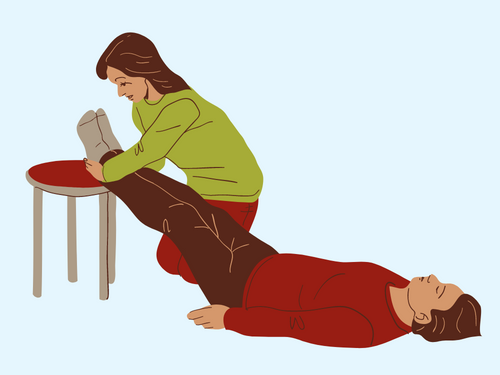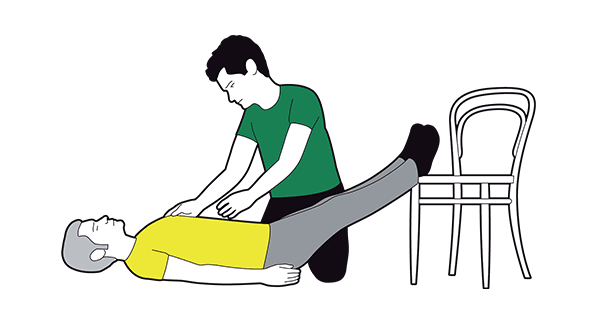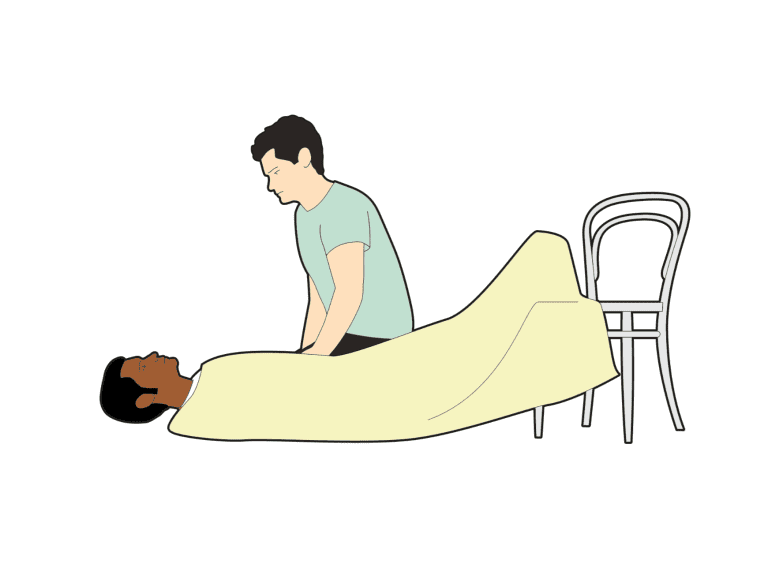Shock is a critical medical condition requiring immediate attention. It happens when the body fails to supply enough blood to vital organs, depriving them of oxygen and nutrients. Without prompt treatment, shock can quickly escalate, leading to organ failure or even death. Learning about its causes, symptoms, and first aid treatment is essential for saving lives.
What Is Shock?

Shock is a condition where the circulatory system cannot maintain adequate blood flow, resulting in a lack of oxygen and nutrients for vital organs. This condition can arise from severe blood loss, infections, heart problems, or other medical emergencies. It’s not a disease but a response to an underlying problem, making early diagnosis and treatment crucial.
Why Is Shock Dangerous?
Shock poses a severe threat due to its impact on the body’s vital functions:
- Oxygen Deprivation: Without sufficient blood flow, organs like the heart and brain begin to shut down.
- Organ Damage: Prolonged oxygen loss can cause irreversible organ failure.
- Cardiac Arrest: If left untreated, shock can lead to the heart stopping entirely.
Quick recognition and action are vital to prevent these outcomes.
The Four Main Types of Shock
Shock comes in different forms, each stemming from specific causes and requiring tailored treatments.
1. Hypovolemic Shock
Hypovolemic shock occurs when the body loses a significant amount of blood or fluids, reducing blood volume and pressure. Common causes include:
- Severe bleeding from injuries or surgeries.
- Dehydration from vomiting, diarrhea, or burns.
- Trauma leading to major blood loss.
2. Cardiogenic Shock
This type arises when the heart cannot pump blood efficiently. Common triggers include:
- Heart attack (myocardial infarction).
- Heart muscle infections or valve problems.
- Abnormal heart rhythms disrupting blood flow.
3. Obstructive Shock
Obstructive shock happens when blood flow is blocked. Examples include:
- Pulmonary embolism (blood clots in the lungs).
- Tension pneumothorax (collapsed lung).
- Cardiac tamponade (fluid accumulation around the heart).
4. Distributive Shock
This type involves excessive blood vessel dilation, reducing blood pressure and limiting circulation. Subtypes include:
- Anaphylactic Shock: Caused by severe allergic reactions.
- Septic Shock: Triggered by life-threatening infections.
- Neurogenic Shock: Due to spinal cord or nervous system injuries.
Recognizing the Symptoms of Shock

Symptoms vary depending on the type and severity of shock but may include:
- Rapid, weak pulse.
- Shallow or rapid breathing.
- Cold, clammy, or pale skin.
- Low blood pressure.
- Confusion, anxiety, or disorientation.
- Blue or gray lips and nails.
- Dizziness or fainting.
Identifying these signs early is critical to effective intervention.
What Causes Shock?
Shock can result from various triggers, including:
- Severe blood loss from trauma or surgery.
- Infections that progress to sepsis.
- Heart failure or heart attacks.
- Allergic reactions leading to anaphylaxis.
- Spinal cord injuries.
- Extreme dehydration from illnesses.
Understanding these causes helps in preventing and addressing shock effectively.
First Aid Treatment for Shock

Knowing how to administer first aid can significantly improve a person’s chances of survival. Here’s what to do:
1. Call for Emergency Help
Dial 911 or your local emergency number immediately. Time is critical in treating shock.
2. Ensure Breathing and Circulation
- If the person isn’t breathing, perform rescue breathing or CPR if trained.
- Monitor their breathing regularly while waiting for help to arrive.
3. Position the Person Properly
- Lay the person on their back and elevate their legs about 12 inches if there are no head, neck, or spinal injuries.
- Avoid raising their head or legs if it causes pain or discomfort.
4. Control Bleeding and Address Wounds
- Apply pressure to external wounds to stop bleeding.
- Use sterile dressings to cover open injuries.
5. Prevent Choking
- Turn the person’s head to the side if they vomit or have fluids in their mouth—unless a spinal injury is suspected.
- For spinal injuries, use a log roll technique to keep their neck and spine aligned.
6. Keep Them Warm and Comfortable

- Cover the person with a blanket to maintain body temperature.
- Loosen tight clothing to promote better circulation and breathing.
Things to Avoid
- Don’t give food or drinks, even if requested.
- Avoid moving the person unnecessarily, especially if spinal injuries are suspected.
- Don’t delay calling for help, even if symptoms seem mild at first.
Long-Term Effects of Shock
The long-term impact of shock depends on its duration and severity. Potential consequences include:
- Permanent damage to vital organs.
- Chronic cardiovascular or neurological issues.
- Psychological effects like anxiety or PTSD from the traumatic event.
Timely intervention can reduce these risks and improve recovery outcomes.
Preventing Shock: Tips for Preparedness
While some causes of shock are unavoidable, certain measures can reduce risks:
- Manage Chronic Conditions: Keep heart disease, diabetes, and infections under control.
- Stay Hydrated: Especially during illnesses or strenuous activities.
- Recognize Allergies: Carry an epinephrine auto-injector if prone to severe allergic reactions.
- Practice Safety: Use proper protective equipment to prevent injuries.
- Seek Early Medical Care: Address health concerns promptly to avoid complications.
Conclusion: Knowledge and Action Save Lives
Shock is a life-threatening emergency, but understanding its causes, symptoms, and treatments can make all the difference. From controlling bleeding to monitoring breathing and positioning the person correctly, every action counts. By staying informed and prepared, you can step in during critical moments and potentially save a life. Stay calm, act swiftly, and remember—the faster the response, the better the chances of recovery.


